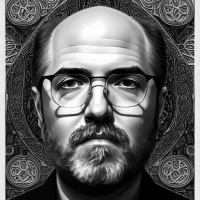Game of Thrones: Drogon’s CGI and Special Effects Explained
Image Engine visual effects supervisor Thomas Schelesny talks about how Drogon came to life in Game of Thrones season 7.
For Game of Thrones fans, it may seem like the political maneuverings that give the show its name all lead to specific turning points for people like Jon Snow, Cersei Lannister, and Daenerys Targaryen, who have had to overcome great obstacles to get where they are today. Although conquest had to take a back seat to a much greater threat by the end of season 7, few confrontations were more memorable than the attack of Drogon in episode 4, “Spoils of War,” which required a massive undertaking by the visual effects team at Image Engine Design, Inc. led by Thomas Schelesny.
Known as “the loot train sequence” to the crew of Game of Thrones, the scene shows Daenerys riding on Drogon’s back laying waste to the Lannister troops as they fight to make their way east past the Dothraki cavalry. Image Engine recently posted their visual effects breakdown on Vimeo, and the combination of green screen with Emilia Clarke, practical effects with the exploding lines of soldiers, and the completely digital dragon is truly something to behold.
Schelesny admits that the computer generated dragon wouldn’t be nearly as impressive without the wonderful accompanying stunt work. “They did some of the biggest stunt burns in history with 30, 40 men all at once, exploding in fire… and they were all thrashing their arms around and acting,” says Schelesny. “Then very quickly afterwards people would rush in and put them out, but a lot of that stuff was practical.” However, the stunt actors had to react to a creature that wasn’t there. How do they do that?
“When Drogon would take a deep breath and blow fire, that fire was also shot practically on a stage, and the motion of that flame moving back and forth, left and right, had to be in very good sync with how our digital character was moving,” Schelesny explains. “The trick is that we animated everything before it was shot. We animated the dragon before the backgrounds were shot; we animated the dragon before the actors were filmed or the fire was filmed. After we had that first pass of animation completed, everything else that was shot in real life was shot to match the dragon.”
But it wasn’t just the exploding soldiers that had to match the actions of a fire-breathing dragon; Daenerys herself had to ride Drogon in sync with his programmed movements. “On Drogon’s back, it was very rare that you would see a digital version of Daenerys. You’d almost always see a green screen photograph version of her because again, it just looks more real,” says Schelesny. “They had the actress sitting on a green screen, a robot controlled base that she would sit on that looked like the dragon’s back, and that was pre-programmed to bank left and right and move up and down in perfect sync with our animation.”
read more: Game of Thrones Season 8 Predictions and Theories
As for how the actors know where to look when there was no actual dragon there, Schelesny explains, “You might fly the drone past and say, ‘Everyone, look at the drone! That’s a giant dragon!’ Or you might have somebody running around on the ground with a pole and a tennis ball on the top. ‘Look at that! That’s the dragon’s head, and it’s coming right towards you!’ And you react to it as it approaches you because it’s going to kill you. But you have to give everyone a central point to look because if they don’t and they’re looking all over the place, the shot becomes almost impossible because you don’t really know where to put the character then.”
Schelesny, who worked on other Game of Thrones effects such as the White Walkers introduction in season 4 before Image Engine came on board, is very proud of the work the new group did in creating Drogon. “If I were to say anything about the loot train sequence,” he says, “my personal feeling is it is possibly the best directed action sequence that I’ve seen on the series. It really brought the audience along for a wonderful ride… It was well laid out, beautifully shot, and you see the ebb and the flow of the battle. And that’s entirely in the hands of the director.”
With the final season of Game of Thrones coming in 2019, Schelesny has a wealth of stellar work to reflect upon with the dragon battle at the peak of his team’s contributions to the show. “Game of Thrones is among my top, most favorite shows I’ve ever been part of, but it’s also by far the hardest because of the fact that we have to put in the time in the shot in the moment,” says Schelesny. “It’s very high risk. It’s my 25th year doing this and it feels as though everything kind of added up to being ready to take this show on.”
For the full audio of this interview, subscribe to our Sci Fi Fidelity podcast, or simply listen below:
Subscribe: Apple Podcasts | Stitcher | Soundcloud
